
Pasaje Polanco es un singular desarrollo residencial y comercial de uso mixto en Avenida Masaryk de la colonia Polanco. Recuerda a algunas zonas comerciales urbanas mucho más antiguas que funcionaban como un pasaje cubierto entre las calles. Las que había en París llevaron a Walter Benjamin a sus reflexiones para el proyecto Arcades. En Ciudad de México, unos pocos aún conservan el nombre de “Pasaje”, sobre todo en el centro de la ciudad. En su mayoría, a medida que avanzó el siglo XX, los pasajes se perdieron o fueron sustituidos por centros comerciales independientes.
En este caso, lo más llamativo es el nivel de subestimación. Esto, considerando el estilo californiano que pudiera parecer más bien descarado que el de otras propiedades de Polanco. La ubicación aquí, en una avenida comercial de primer orden, lo hace aún más notable.
El complejo se inauguró en 1938. Fue diseñado por el arquitecto e ingeniero Francisco Serrano, quien posteriormente se ganó el reconocimiento por sus torres residenciales especialmente Post-Art-Decó en la Condesa. Probablemente sea más famoso por el edificio de la Facultad de Ingeniería en el Campus de la Ciudad Universitaria de la UNAM.
Pero aquí, incluso coqueteando con el evidente estilo West Hollywood, Serrano logró una unidad notable. El complejo sigue siendo popular -al igual que su uso habitacional- desde que se inauguró. Para ser una propiedad comercial y residencial, todavía tiene arrendatarios individuales, es decir, restaurantes independientes. Gran parte del nivel de la calle, en tres de sus lados, sigue estando dedicado a restaurantes de un solo dueño que todavía abren sus puertas, bajo los cuatro edificios de departamentos residenciales del Pasaje.
El reloj de sol emblemático, mostrado arriba, también es original. Fue diseñado por el propio Serrano. El pasaje ya no está abierto en su totalidad de norte a sur. Pero para los que pasan por allí, sigue siendo un lugar encantador y agradable de visitar. La influencia del edificio en otras construcciones similares de la ciudad sigue siendo incalculable. Y es un diseño que mucha gente espera que vuelva a aparecer.

Cercano a 0.18 kms.
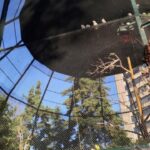
Cercano a 0.21 kms.

Cercano a 0.31 kms.
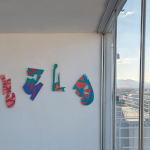
A high-rise gallery of art and architecture on the very eastern edge of Tlatelolco . . .
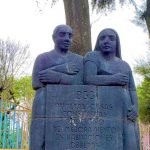
A tiny neighborhood park bears witness to a historical neighborhood . . .
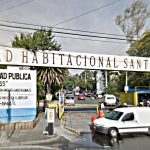
One of the grandest of 1950s housing experiments in Mexico City . . .
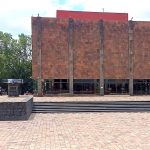
One of Mexico City's most famous residential neighborhoods is today a leafy Modernist neighborhood....

A major cultural venue in Iztapalapa...